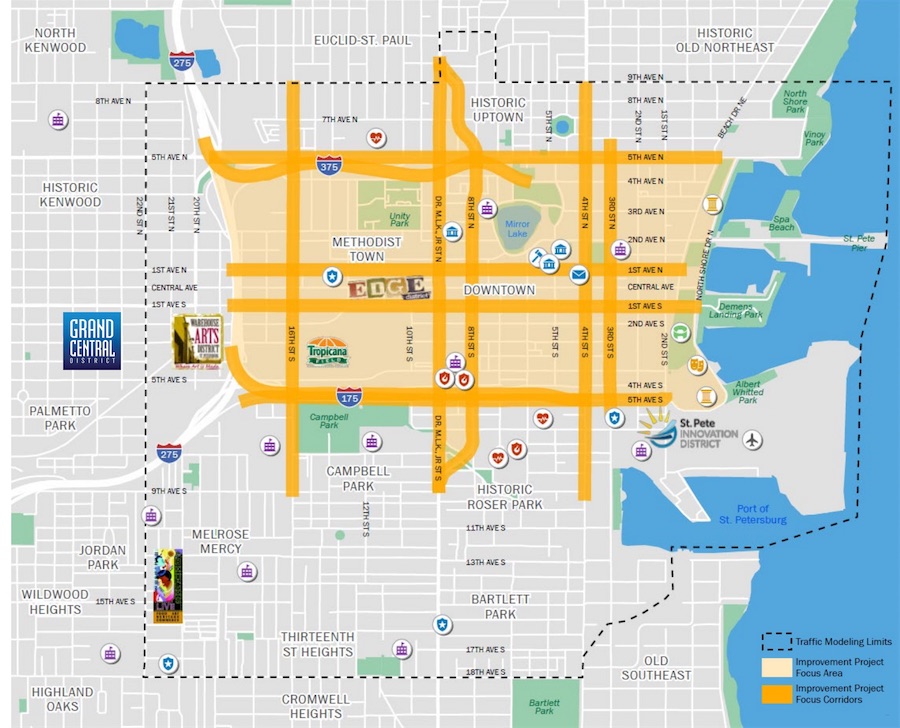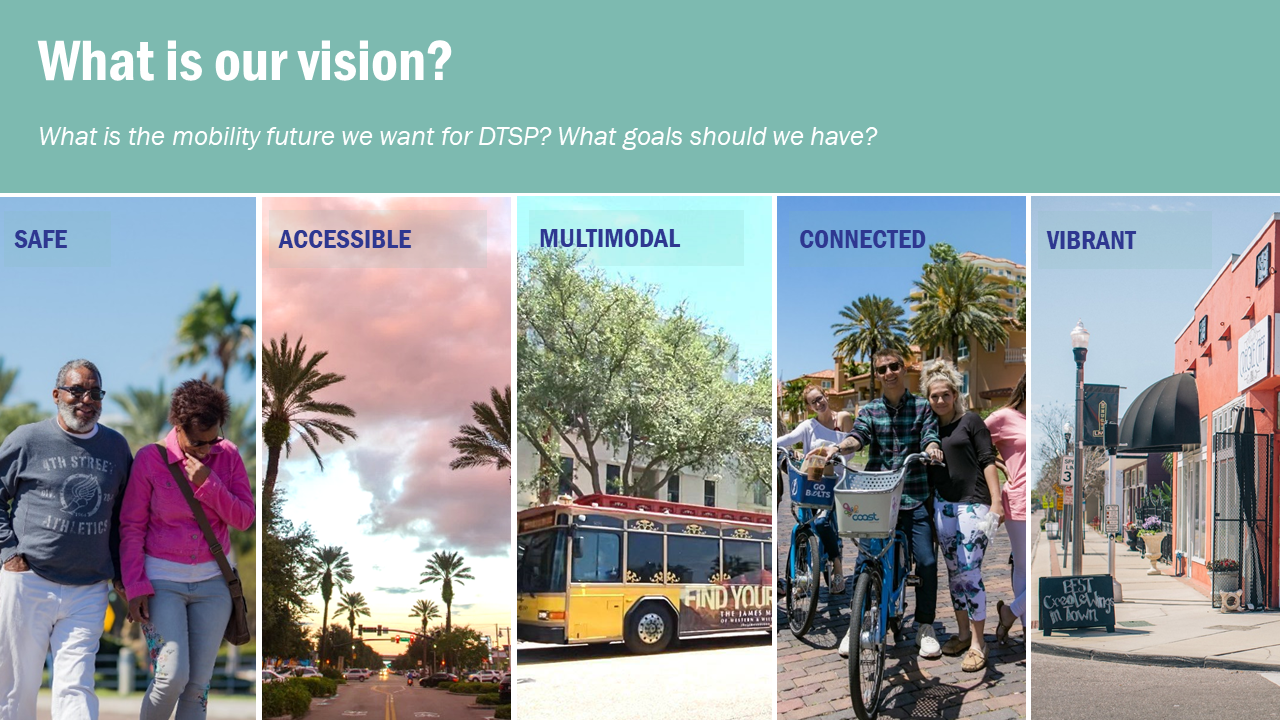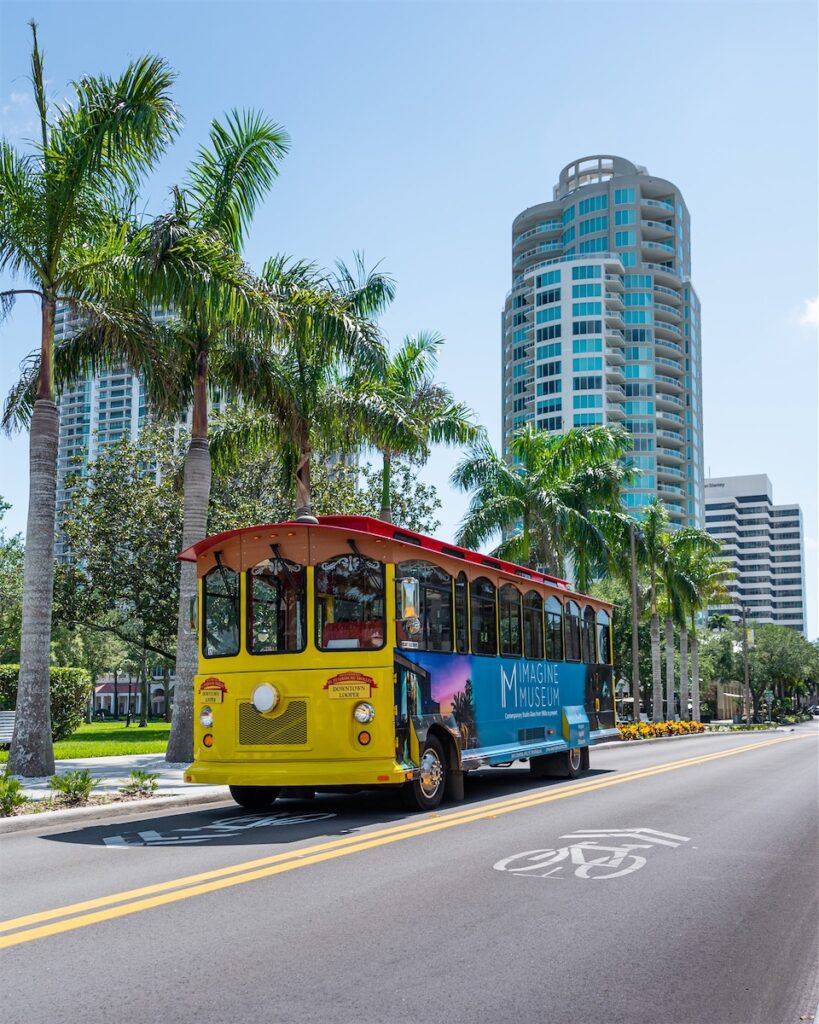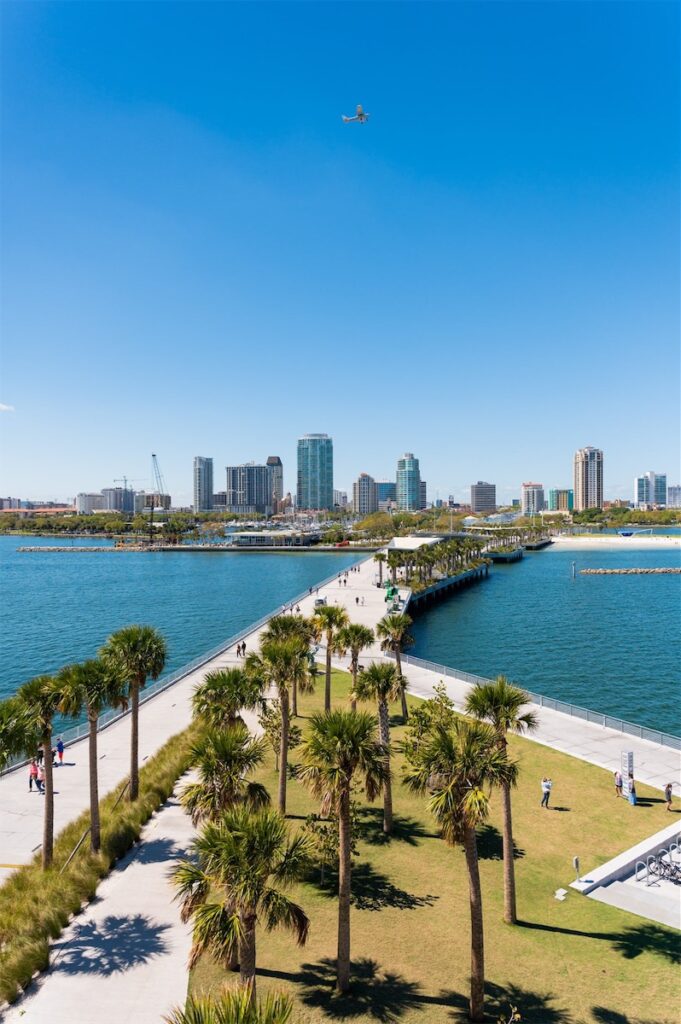Email: info@forwardpinellas.org
Phone: 727.464.8250

Email: info@forwardpinellas.org
Phone: 727.464.8250
Forward Pinellas, the City of St. Petersburg, and the Florida Department of Transportation (FDOT) worked together on an analysis of the Downtown St. Petersburg transportation network as part of the Downtown St. Petersburg (DTSP) Mobility Study. The purpose of the mobility study is to understand the context and vision for multimodal mobility in DTSP, conduct conceptual planning and evaluation of multimodal improvement options, and prioritize short- and long-term projects. The study focused on defining and evaluating improvement projects that affect the overall transportation network in DTSP, including potential projects that affect roadway capacity, operations, safety, and connectivity for pedestrians, bicyclists, transit users, and drivers, as well as accessibility to hospitals and travel times for emergency responders.
The intent of the study is to identify and evaluate project concepts and improvements to the transportation network, including two-way street conversions, redesign or removal of the interstate spurs, transit, bicycle and pedestrian infrastructure improvements, and other safety and mobility enhancements. The study officially launched in early 2020 and is wrapping up this month with some project priorities for consideration.

To accomplish the goals and achieve the mobility vision established as part of this study, an Action Plan defines a series of recommended projects, studies, and programs that the City of St. Petersburg, Forward Pinellas, FDOT, or other partner agencies should take to create a more reliable, inclusive, and efficient transportation system. The projects were organized into two tiers or priorities: Priority One Projects are those that should be advanced in the next 14 years, and Priority Two Projects are those that should advance once implementation of the Priority One Projects is completed. For the Priority One Projects, the specific actions are organized into short-term (1-3 years), mid-term (4-6 years), and long-term (7-14 years) actions. Actions related to Priority Two Projects are anticipated to occur later (15+ years). Together, the recommended actions from this study are designed to propel the City’s goal of enhancing DTSP as a vibrant, unique, and walkable place where residents and visitors enjoy spending their time and money.


The following studies, projects, strategies, or plans should be advanced as the top priorities:
Another short-term action includes the development of an I-175 Redevelopment and Reconnecting Communities Strategy, where the City and Forward Pinellas undertakes an inclusive land use, urban design, equity, and transportation study to evaluate options for I-175, 4th Ave S, and 5th Ave S corridors. This will be a community driven effort to evaluate desires and determine next steps. The City and Forward Pinellas are currently exploring funding opportunities for this project, including potentially applying for the Reconnecting Communities Pilot Program, which is a competitive federal grant under the recent Bipartisan Infrastructure Law meant to reconnect communities through the removal, modification, or mitigation of barriers such as transportation facilities that separate communities and impact mobility and accessibility.
This study was an initial high-level look at the downtown network to assess the feasibility of these various transportation modifications. It was developed in close collaboration with the public, with four broad phases of outreach throughout the process. The first round of outreach was used to gather input to develop a set of project scenarios that were tested and then presented to the public. Additional feedback was gathered on the scenarios, and they were refined further.

The scenarios were then broken down into five project concepts. The team gathered input and feedback on the concepts from the public to formulate the recommendations. In total, there were more than 10 community conversations, more than 1000 comment board views, nine listening sessions, four surveys, and over 1000 survey responses.
Overall, the public was in favor of the two-way conversion/lane-reallocation projects and the modifications to I-175. However, the DTSP Mobility Study identifies project concepts that are very much at a planning level. Moving forward, funding will need to be to be identified for each of these projects, and further study is needed to determine next steps, and the public will be involved throughout the process. If you are interested in getting involved, please visit our project website at www.forwardpinellas.org/dtsp for more information.

